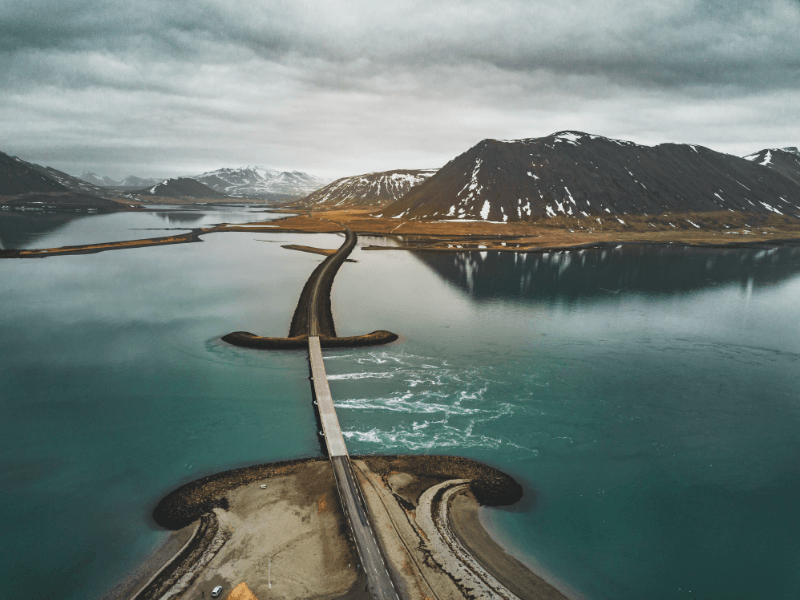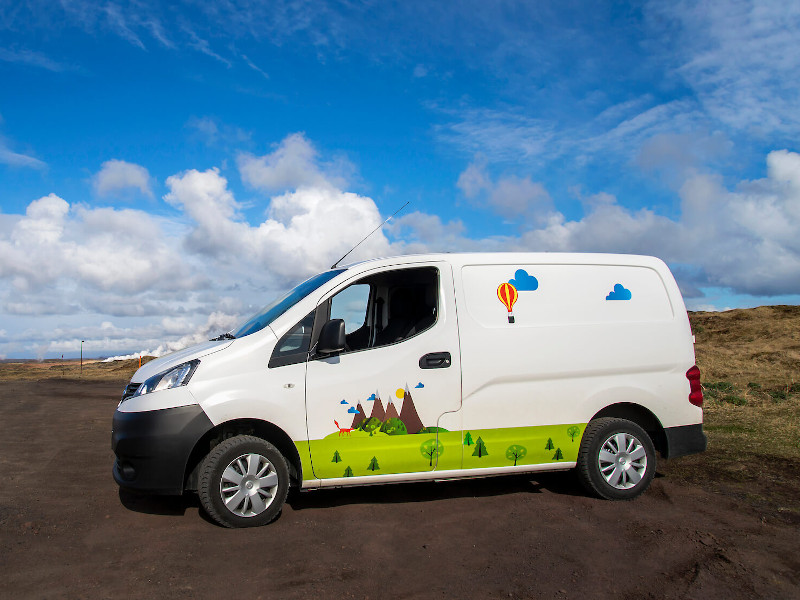Driving the scenic routes in this Nordic country is something that everyone should experience at least once in their life. Hitting the roads in the summer is a carefree experience, but driving in Norway in winter might feel like a challenge. Fear not; with the right know-how, you’ll be safer than vegetables in a kindergarten.
The roads here are safer than most other countries, even if they can be as slippery as ice in the winter. In this article, we’ll explain the ins and outs of driving in Norway in the winter so you can hit the road without worry.
Is it Easy to Drive in Norway in Winter?
It's as easy to drive in Norway in winter as long as you know the basics. Navigating the cold landscape is more than just driving in snow, since it has all the elements of the unforgiving Norwegian weather. It has slippery roads and unpredictable winds, and the further north you go, the more challenging it becomes.
Despite this, Norway continues to be one of the safest countries to drive in! This has just as much to do with how people behave on the road as it has to do with everything around the driver. The roads are always well maintained and if anything happens, the government is on it faster than ants on a picnic blanket.
Drive slowly and enjoy the view as you go. The only thing left to do is rent a campervan in Norway and start your adventure!

Safety Drive in Norway in Winter
The key aspects of driving safely in the Norwegian winter are adapting to your surroundings and being prepared. In Norway, everyone learns how to drive in snowy conditions when studying for their driver’s licenses, and it becomes an annual practice for them.
Adapting to the surroundings comes as natural to a Norwegian driver as flying does to a bird. The first and most important thing to remember when driving in Norway in winter is to adapt the speed to the road. If the road is icy, blasting down the highway at 120 kilometers an hour is a terrible idea. A good rule of thumb is to remember that it will take you up to 10 times longer to stop on a slippery road compared to dry asphalt, so adapt your speed accordingly.
The second thing to remember is everything above ground. When driving in Norway in winter, even light snowfall can make it hard to see what’s in front of you. Keep a comfortable distance from the car in front of you to be on the safe side, and don’t be afraid to be afraid (slow down if you are concerned).
Thirdly, keep the car in tip-top shape. Ensure that the roof doesn’t have large chunks of snow, that the windshield and mirrors are clear of snow and ice, and that the headlights are free of snow. These things are important since they ensure you can see, be seen, and not involve the cars behind you in an involuntary snowball fight (snow from the roof will blow off and hit the cars behind you).
Last but not least, be prepared. Always have warm clothes, a flashlight, and a pair of gloves in the car. Keeping some snacks and a beverage or two is also encouraged. These things are good to have if you have to wait for roadside assistance. Check the weather at Yr to avoid any blizzardy surprises.

Do I Need Winter Tyres in Norway in Winter?
If you value your life and traveling budget, you need winter tires in Norway. Some laws dictate that you must have winter tires between the 1st of November and the first Sunday after Easter. If you don’t, you’re risking your own and other peoples’ lives on the road, as well as your travel budget, since fines are notoriously high in Norway.
When you rent a campervan in Norway, your vehicle will most likely come equipped with the appropriate tires. Just check with the rental company before you take the keys, though. Rather safe than sorry!
Winter Road Closures
Due to the weather in Norway, some roads will be closed this time of year. Sometimes, it is because of the massive amounts of snow; other times, it is because of the unnerving amount of ice. This will most often affect bridges, mountain passes, and other exposed roads. They’ll be physically closed or marked with bright red lights (think tunnels and bridges).
For live updates, keep an eye on the Norwegian Road Administration. They post everything from traffic jams to closed roads all year round. A safe bet is to stick to the main roads or larger roads. They are likely to be plowed and sanded, making them pretty safe to drive.

Choosing the Right Campervan for Winter Driving in Norway
There are a couple of things to consider when you choose your campervan for driving in Norway in winter:
- Heating and insulation: Make sure the campervan has adequate insulation to keep the cold out and warmth in.
- Proper power supply: If you want to experience Norway in a campervan, power is key. It keeps the lights and heating on and phones charged. So, it's very important when driving in Norway in winter.
- Size matters: In this case, being small is a good thing. You’ll be able to more easily navigate the road, and they tend to use less gas and power. If you're going in a large campervan, you'll be prone to catching the wind when you drive, which isn't too fun.
Beginning a Road Trip in Norway in Winter
When you’re braving the white roads of the north, remember what is said in this article, and you’ll be fine. Make sure to plan your itinerary and stick to the major roads if you want to be on the cautious side of things. But don’t be afraid to explore the smaller roads if you want to see the Northern Lights in Norway, for example.



 By
By 






